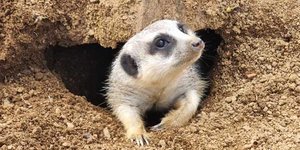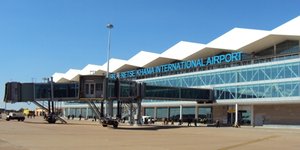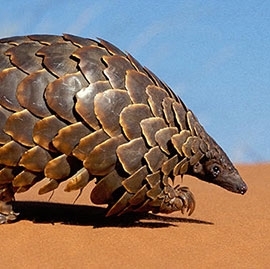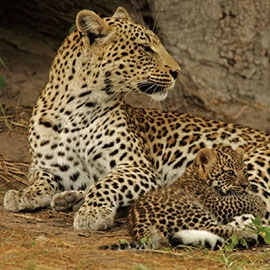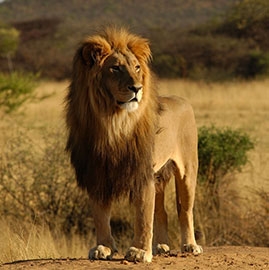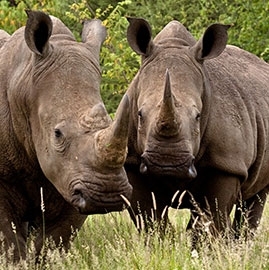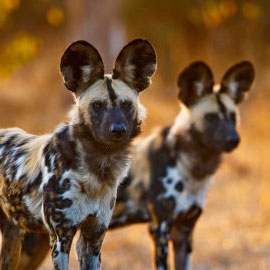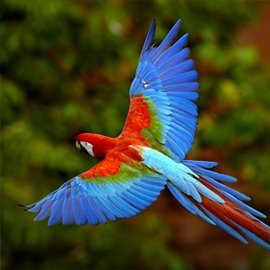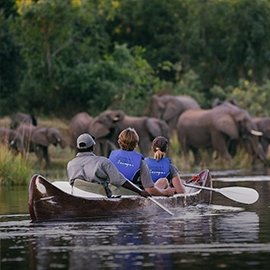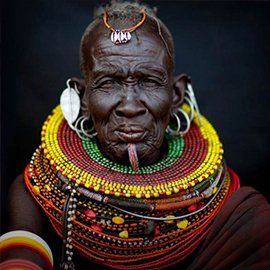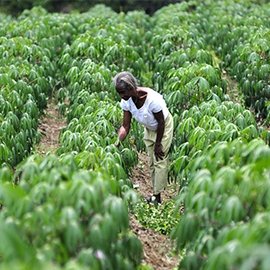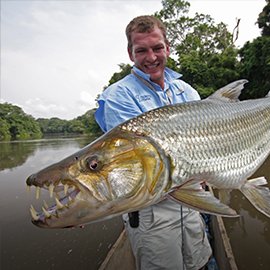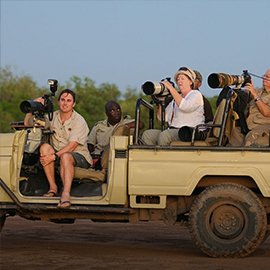Makgadikgadi Pans National Park
Safari suitability: 7/10
Find your tourOff the beaten path. Great option for the Botswana rainy season.
What YAS members think
Highlights
- One of the largest salt flats in the world
- Home to Africa's biggest zebra populations
- Only breeding population of greater flamingos in southern Africa
- Location of Chapman's Baobab, one of Africa's largest trees
- Nearby Orapa Game Park is a sanctuary for the rare white rhinoceros
About Makgadikgadi Pans National Park
Situated in the center of the savanna of north eastern Botswana, the Makgadikgadi Pan is one of the largest salt flats in the world. The pan is the remnant of Lake Makgadikgadi, an ancient lake 80,000 km² (30,888 miles²) in area and 30 m (90 ft) deep. The lake dried up 10,000 years ago, leaving only a flat expanse of clay crusted with light-catching white salt and other minerals. The pan is located in the Kalahari Basin, along with other commonly-visited pans: Sua, Ntwetwe and Nxai Pans, forming the largest salt pans in the world. The Makgadikgadi Pans National Park is situated on the western edge of this region, and the Nxai Pans National Park is located just above it, making it easy to visit them both on one safari.
As the sun sets over the remote Makgadikgadi Pan in the Kalahari Desert, the vast dome of countless stars are mirrored in the sparkling crystals of the salt flats below, the dried remnants that tell the story of the ancient and enormous lake. Eternity begins here, with unending horizons and soul-expanding isolation marking the enormity of space, while layers of history, from Dr. Livingstone’s famous journey to stone tool relics of pre-human cultures, dig back through immemorial time.
A visit to Makgadikgadi Pans National Park in the dry season, from April through October, is a good time to experience the otherworldly landscape of the pans. Predators such as lions cheetah, leopards and hyenas are attracted by the migrating herds of wildebeest and one of Africa's biggest zebra populations. Graceful springbok, playful meerkats and elegant ostriches are also common sights. In the dry season, the animals are also drawn to the Boteti River, which is where most of the lodges are found.
Less common is the rare white rhinoceros. Orapa Game Park, nearby to Makgadikgadi Pans, is a sanctuary for white rhinos and features one of South Africa’s most respected breeding programs, a crown jewel of endangered species conservation.
The deluge of rains begins in November, and with it come the largest herds of animals seeking relief from the dry, hot summer. Water birds, including Great White Pelicans, ducks, teals, spoonbills and geese flock to the water-filled pans by the thousands. But not to be missed is the flamboyance of a sky full of tens of thousands of pink flamingos. The only breeding population of Greater Flamingos in southern Africa come home to the pan. The heavy rainfalls of the very wettest seasons coax big game such as elephants and buffalo into the area.
Chapman's Baobab is one of Africa's largest trees. Over 3,000 years old and sporting a girth of 25 m (82 ft), this is the most prominent landmark on the lonely savannah. A natural navigational draw, it served as a post office for nineteenth century explorers, who left letters in a hollow in its trunk.
When to visit Makgadikgadi Pans National Park
Makgadikgadi Pans National Park is open year-round. During the rainy season, which runs from mid-November through March, the pans fill with water and the wildlife viewing opportunties increase. However, the roads can become practically inaccessible, depending on the amount of rainfall. The lodges are located primarily around Botetit River, which is best visited May through October.
 United States
United States
We were here in January, which is their peak season as the rains bring wildlife. The rains were late this year, so we did not get to see as much wildlife as I would have liked. The bat-eared foxes are my favorite, but it's hard to get them as you have to stay on the roads and they are shy when they hear a vehicle approaching. The zebra and wildebeest were starting to come out in droves, and they did attract some lions. Compared to other parks I visited in Botswana, this was lacking in wildlife. But, its size and limited lodging options make it a great choice if you're looking for that remote, bush vibe.
Sort by:
The Makgadikgadi Pans are an outstanding safari destination. I like this region because it remains largely untouched and provides intrepid visitors with adventure, unique wildlife sightings and even more unique landscapes. Indeed, it is one of those places where you can camp and not see another visitor for several days! The highlight is to witness the two different ecological zones - The Boteti River is the dry season range for thousands of zebra and the "Greater Salt-Pan" region (and its grasslands) are the wet season range for these large herds. The best way to experience the park and to understand the animal movements (indeed to WITNESS these movements) is to "mobile camp" in both seasonal ranges - the idea being to be "mobile" in order to find the concentrations of animals. One of the best experiences I have ever had in the park: After looking for the "zebra migration" for several days, we were woken at night by the constant calls of zebra all around us....at sunrise we woke to find our campsite completely surrounded by uncountable numbers of zebras! Sometimes, we find all sorts of surprises out in the pans: large gatherings of flamingos and water birds, eruptions of thousand of bullfrogs or lines of zebra and wildebeest kilometers long moving between water points and grazing.
I love spending a night out on the salt pans of Botswana, it's an out of this world experience. Nothing really seems real. Imagine spinning around and around and around and the view simply not changing at all, just a white expanse of nothingness. This is what it is like out on Makgadikgadi Pan. There are a few places in the world where you could describe the view as 'nothing', and the salt pans of Botswana are one of them. There are a number of places to go and stay, wonderful lodges in the middle of nowhere with a vast expanse of nothingness surrounding them, quite inspiring really. Makgadikgadi is an area the size of Portugal and largely uninhabited by humans. It's stark, flat, featureless terrain stretches to eternity, meeting and fusing with a milky-blue horizon. A vast sea of white - flat as a pancake and exceptionally difficult to ascertain how far you were looking, maybe it was 400 m maybe it was 4 km, I couldn't really tell. There was nothing to gauge distance. Makgadikgadi is an out of this world experience in a vast sea of white. Memorable.
 United States
United States
We chose to drive out around 100 miles to a place called Kubu Island. The high grasses on the bottom of the hot car made me a bit nervous - you'll drive through a lot of it to get there, and stopping can be a bad idea if you don't find a bare space. Mud and dodgy signing didn't stop us. GPS is, of course, a good idea. I'm still a map and compass guy, to the annoyance of an older British gentleman we ran into. We saw no other vehicles in this immense grassland. The drive to Kubu Island is beautiful, and the place itself is a great place to camp. On the edge of a massive salt sea (drive on this at your own risk...it gets sketchy fast, and I believe it isn't allowed), Kubu is made of very interesting rock forms. You can't see the edge of the see, and watching the sun fade from beneath the gnarled old trees here feels like you're exploring some new planet. There's the frame of an old sail-car there for using on the sea, if you want to bring a sail and some patience. The wildlife is a bit sparse, but the draw here is being off the map in the heart of Africa. You'll emerge with a different idea of space.
 Australia
Australia
The Makgadikgadi is to Africa what Salar Uyuni is to South America, an amazingly vast stretch of salt flats. One of only three major salt flats in the world (the third is in Utah) the pans are a truly remarkable sight and an unmissable attraction when travelling to Botswana. Ill start by saying that we were there at totally the wrong time, although I admit wed actually planned it that way. The rains had started early in November and whilst we knew that too much water would make them impossible to cross with our Landy, just a little water would be fine AND would mean a greater chance of spotting wildlife. In short, it worked...but only just! We got stuck plenty; the tracks were pure sludge, but our Land Rover managed most of them with a little sweet persuasion. YES we did spot plenty of furry and feathery ones, lots of zebras, wildebeest and an endless ocean of flamingos, which was just astonishing. But, to be honest, what really WOWed us was the scenery of the pans covered in water. We ended up seeing plenty of other wildlife in South Africa but THIS spectacle could not be repeated anywhere else in the world. Driving on the pans (and their outskirts) on a gorgeous sunny day after heavy rains makes it seem as if youre gliding on a sparkling mirror. The sky, clouds and birds are reflected in such a splendid way it makes the whole place utterly surreal. The Makgadikgadi Pans is also supposed to be a bird lovers paradise, so if you are that way inclined then youll have that to look forward to as well. We are, unfortunately, utterly ignorant when it comes to birds and can barely tell the difference between geese and ducks, so there was no hope for us! Never mind... We stayed at Planet Baobab Camp for two nights on our way out and really digged this place, even with its dodgy showers; the pool was just an absolute dream. Whether visiting during dry season to enjoy the splendour of the salt flats or flying over them during wet season to take in the wildlife and the astounding scenery, do make sure you add this park to your safari list, you wont regret it.
Makgadikgadi Pans National Park is easily accessible via Maun, which is a prime hub for safaris. It is roughly 200 km / 125 miles and a three-hour drive.
Many visitors use charter companies based in Maun to fly to the various lodges in Botswana. These include Delta Air, Mack Air, Moremi Air Services, Wilderness Air, Wildlife Helicopters and Kalahari Air Services.
The following airlines travel to Makgadikgadi Pans National Park

Kavango Air was established in 2005 by Mark Smith who has been operating aircraft in northern Botswana since 1990. Kavango Air strives to keep safety its first priority, punctuality its second and also keeping the flight enjoyable at the same time. Based in Maun (Botswana) on the edge of the Okavango Delta, it is ideally positioned for quick scenic flights over the delta, as well as camp transfers to the numerous lodges and camps in the delta and surrounding areas. Kavango Air does air charters to almost anywhere in Southern Africa, and also does medical evacuations. The crew receives extensive training in bush flying techniques, and the pilots have to adhere to the high safety standards instilled by the company. Visit website
Also flies to:






Airlink is a privately-owned, BBBEE Level 4 business and regional airline serving a comprehensive network of smaller destinations throughout Southern Africa. We are now operating independently under our own unique 4Z flight code offering more freedom, more choices and more travel opportunities. Visit website
Also flies to:









Makgadikgadi Pans map
Nearby parks and game reserves
Related articles
Latest photos
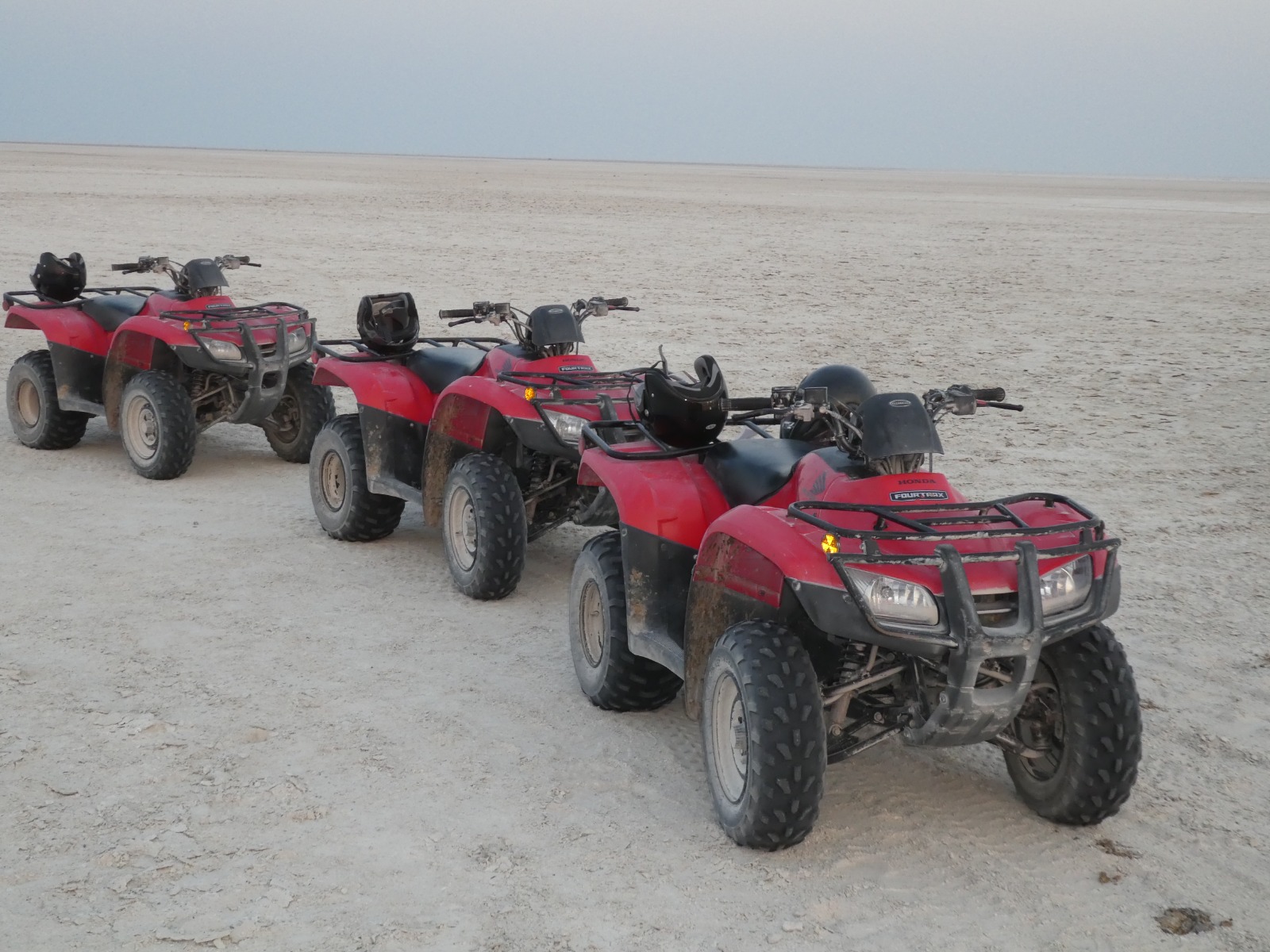


 Botswana
Botswana
 United Kingdom
United Kingdom
